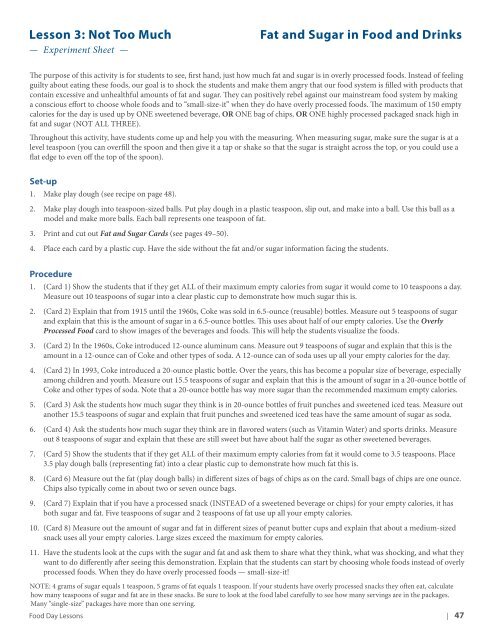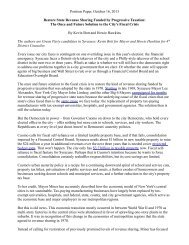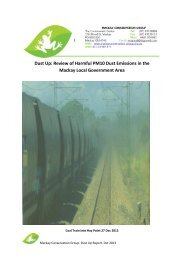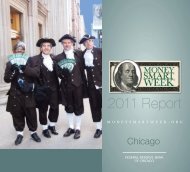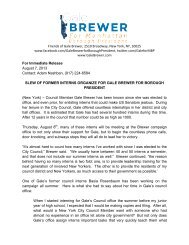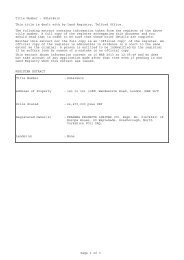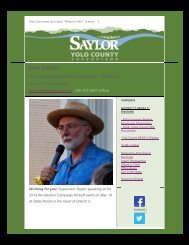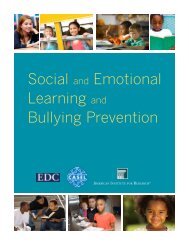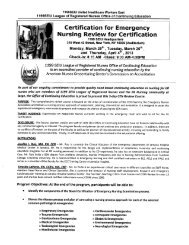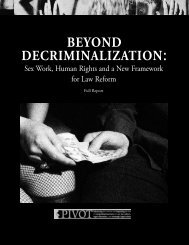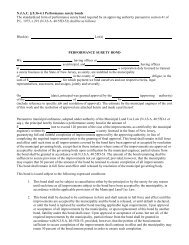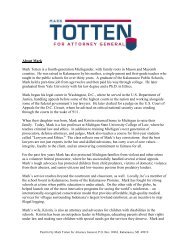2012 Food Day School Curriculum
2012 Food Day School Curriculum
2012 Food Day School Curriculum
Create successful ePaper yourself
Turn your PDF publications into a flip-book with our unique Google optimized e-Paper software.
Lesson 3: Not Too Much— Experiment Sheet —Fat and Sugar in <strong>Food</strong> and DrinksThe purpose of this activity is for students to see, first hand, just how much fat and sugar is in overly processed foods. Instead of feelingguilty about eating these foods, our goal is to shock the students and make them angry that our food system is filled with products thatcontain excessive and unhealthful amounts of fat and sugar. They can positively rebel against our mainstream food system by makinga conscious effort to choose whole foods and to “small-size-it” when they do have overly processed foods. The maximum of 150 emptycalories for the day is used up by ONE sweetened beverage, OR ONE bag of chips, OR ONE highly processed packaged snack high infat and sugar (NOT ALL THREE).Throughout this activity, have students come up and help you with the measuring. When measuring sugar, make sure the sugar is at alevel teaspoon (you can overfill the spoon and then give it a tap or shake so that the sugar is straight across the top, or you could use aflat edge to even off the top of the spoon).Set-up1. Make play dough (see recipe on page 48).2. Make play dough into teaspoon-sized balls. Put play dough in a plastic teaspoon, slip out, and make into a ball. Use this ball as amodel and make more balls. Each ball represents one teaspoon of fat.3. Print and cut out Fat and Sugar Cards (see pages 49–50).4. Place each card by a plastic cup. Have the side without the fat and/or sugar information facing the students.Procedure1. (Card 1) Show the students that if they get ALL of their maximum empty calories from sugar it would come to 10 teaspoons a day.Measure out 10 teaspoons of sugar into a clear plastic cup to demonstrate how much sugar this is.2. (Card 2) Explain that from 1915 until the 1960s, Coke was sold in 6.5-ounce (reusable) bottles. Measure out 5 teaspoons of sugarand explain that this is the amount of sugar in a 6.5-ounce bottles. This uses about half of our empty calories. Use the OverlyProcessed <strong>Food</strong> card to show images of the beverages and foods. This will help the students visualize the foods.3. (Card 2) In the 1960s, Coke introduced 12-ounce aluminum cans. Measure out 9 teaspoons of sugar and explain that this is theamount in a 12-ounce can of Coke and other types of soda. A 12-ounce can of soda uses up all your empty calories for the day.4. (Card 2) In 1993, Coke introduced a 20-ounce plastic bottle. Over the years, this has become a popular size of beverage, especiallyamong children and youth. Measure out 15.5 teaspoons of sugar and explain that this is the amount of sugar in a 20-ounce bottle ofCoke and other types of soda. Note that a 20-ounce bottle has way more sugar than the recommended maximum empty calories.5. (Card 3) Ask the students how much sugar they think is in 20-ounce bottles of fruit punches and sweetened iced teas. Measure outanother 15.5 teaspoons of sugar and explain that fruit punches and sweetened iced teas have the same amount of sugar as soda.6. (Card 4) Ask the students how much sugar they think are in flavored waters (such as Vitamin Water) and sports drinks. Measureout 8 teaspoons of sugar and explain that these are still sweet but have about half the sugar as other sweetened beverages.7. (Card 5) Show the students that if they get ALL of their maximum empty calories from fat it would come to 3.5 teaspoons. Place3.5 play dough balls (representing fat) into a clear plastic cup to demonstrate how much fat this is.8. (Card 6) Measure out the fat (play dough balls) in different sizes of bags of chips as on the card. Small bags of chips are one ounce.Chips also typically come in about two or seven ounce bags.9. (Card 7) Explain that if you have a processed snack (INSTEAD of a sweetened beverage or chips) for your empty calories, it hasboth sugar and fat. Five teaspoons of sugar and 2 teaspoons of fat use up all your empty calories.10. (Card 8) Measure out the amount of sugar and fat in different sizes of peanut butter cups and explain that about a medium-sizedsnack uses all your empty calories. Large sizes exceed the maximum for empty calories.11. Have the students look at the cups with the sugar and fat and ask them to share what they think, what was shocking, and what theywant to do differently after seeing this demonstration. Explain that the students can start by choosing whole foods instead of overlyprocessed foods. When they do have overly processed foods — small-size-it!NOTE: 4 grams of sugar equals 1 teaspoon, 5 grams of fat equals 1 teaspoon. If your students have overly processed snacks they often eat, calculatehow many teaspoons of sugar and fat are in these snacks. Be sure to look at the food label carefully to see how many servings are in the packages.Many “single-size” packages have more than one serving.<strong>Food</strong> <strong>Day</strong> Lessons | 47


